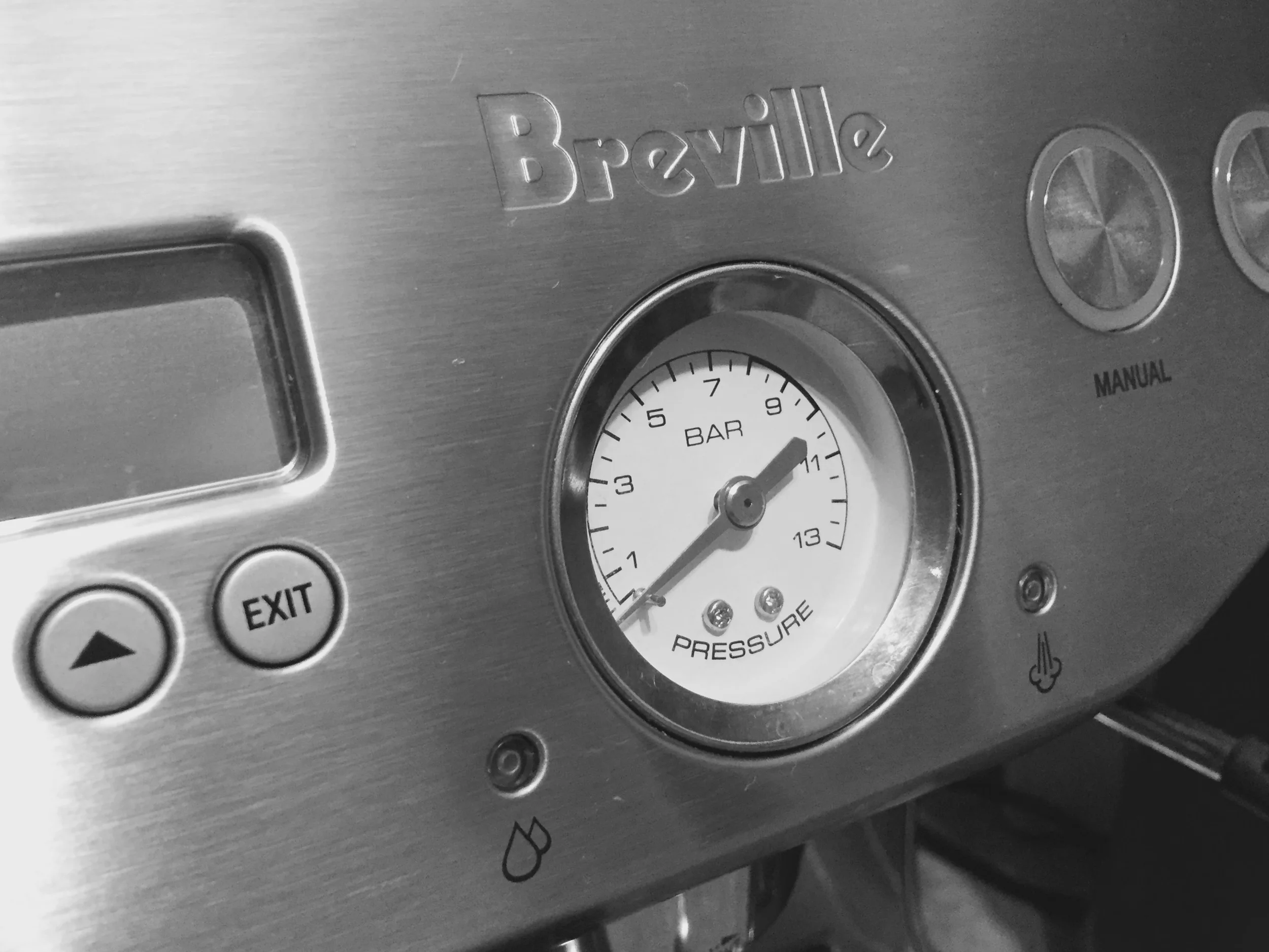When it comes to brewing great Espresso there are so many variables that can affect the quality of your coffee. By understanding how to use your built in Brew Pressure Gauge you will have a little trick up your sleeve to help you in consistently brewing great Espresso.
The Brew Pressure Gauge is your coffee machines way of showing you exactly how much pressure it is applying to your coffee during an extraction. It is important to understand that the pressure itself is not a variable when brewing your coffee, this is not a setting that you can change in your machine. What the Brew Pressure Gauge does allow you to do, is give you a way to understand what you may need to tweak in order to improve your coffee. Why not watch the video below for a brief overview on using the Brew Pressure Gauge?
Pressure is created when there is resistance in the flow of water from the Espresso Machines pump to your cup, when there is no resistance in the portafilter (an empty basket) water will run through very quickly. When there is resistance in the basket (ground coffee) it slows down the waters path creating pressure, in other words your machine has to work harder to pass the same amount of water through the coffee.
When brewing you will now be able to use this gauge to understand if there is too much or too little resistance in the waters path. Before we go on, it is important to establish the benchmarks. When your coffee extraction begins, the coffee machines pump will push water through the grounds. The gauge will shoot up and sit briefly at around 10 bars of pressure, then it will slowly reduce back down and should settle between 8.5 - 9.5 bars of pressure. If this occurs, then you know your grind is set correctly and you are on track to extract 60mls of Espresso in approximately 30 seconds (for a double espresso).
Too Much Pressure
So what if the pressure remains above 9.5? This means that your coffee machine is having to work too hard to pass the water through your coffee, creating more pressure. As a result your coffee extraction will take too long, this is called over extraction and will yield a very acidic and bitter tasting coffee. To fix this you may need to do one or more of the following:
- Change the grinder to a coarser setting
- Reduce the Dosage (amount of coffee)
- Apply less pressure when tamping
Too Little Pressure
Perhaps your pressure gauge is showing less than 8.5 while your extraction is running. If this is the case then it means the water is finding it too easy to pass through the ground coffee in your portafilter. When this occurs your coffee extraction will happen too quickly (under extracted), resulting in a weak and sour tasting espresso. To fix this you may need to one or more of the following:
- Change the grinder to a finer setting
- Increase the Dosage (amount of coffee)
- Apply more pressure when tamping
As always, brewing espresso is about controlling the variables as much as possible allowing you to get consistent results. Understanding the relationship between your coffee grind and how that affects pressure will allow you to use the Brew Pressure Gauge to diagnose any adjustments that might need to be made.
